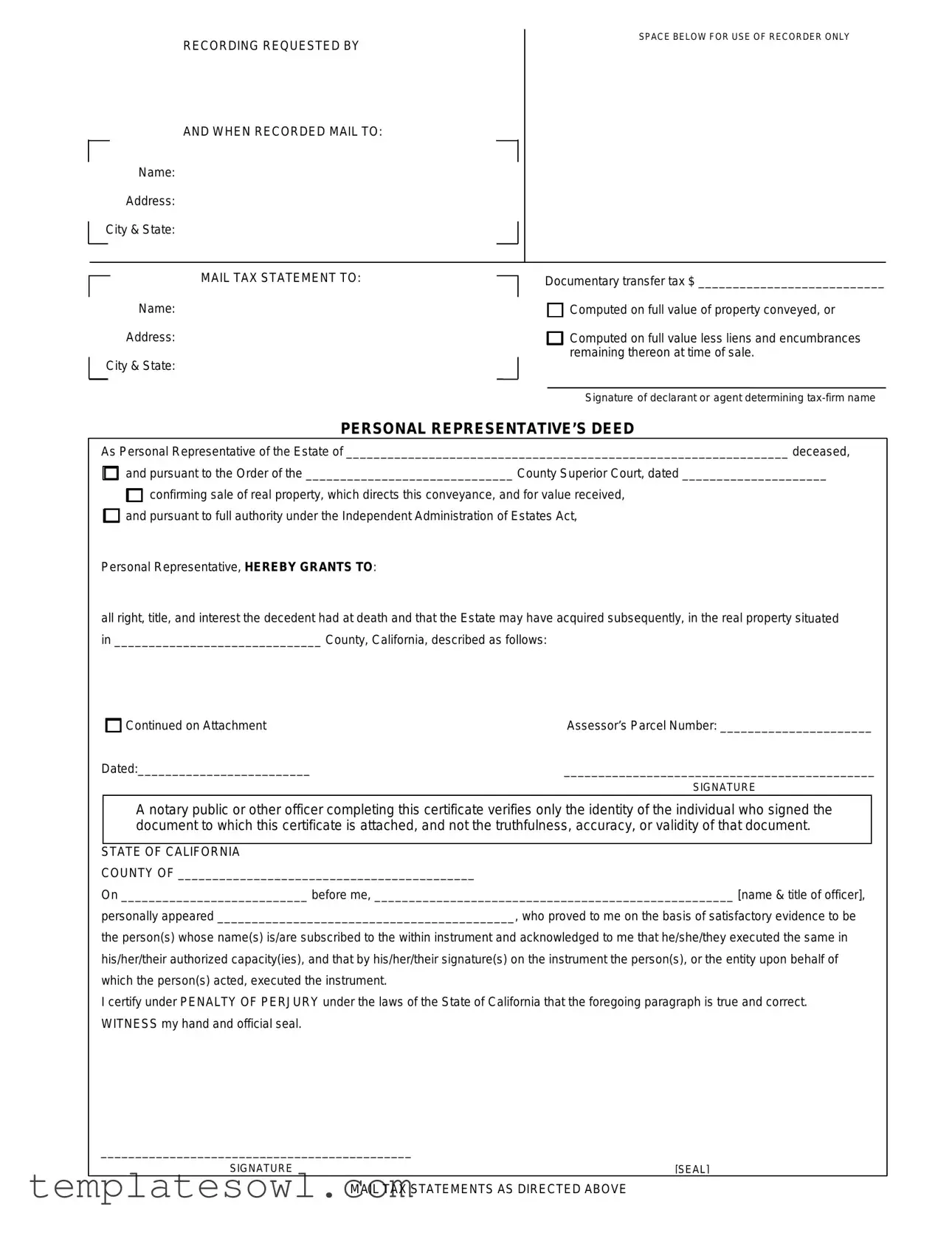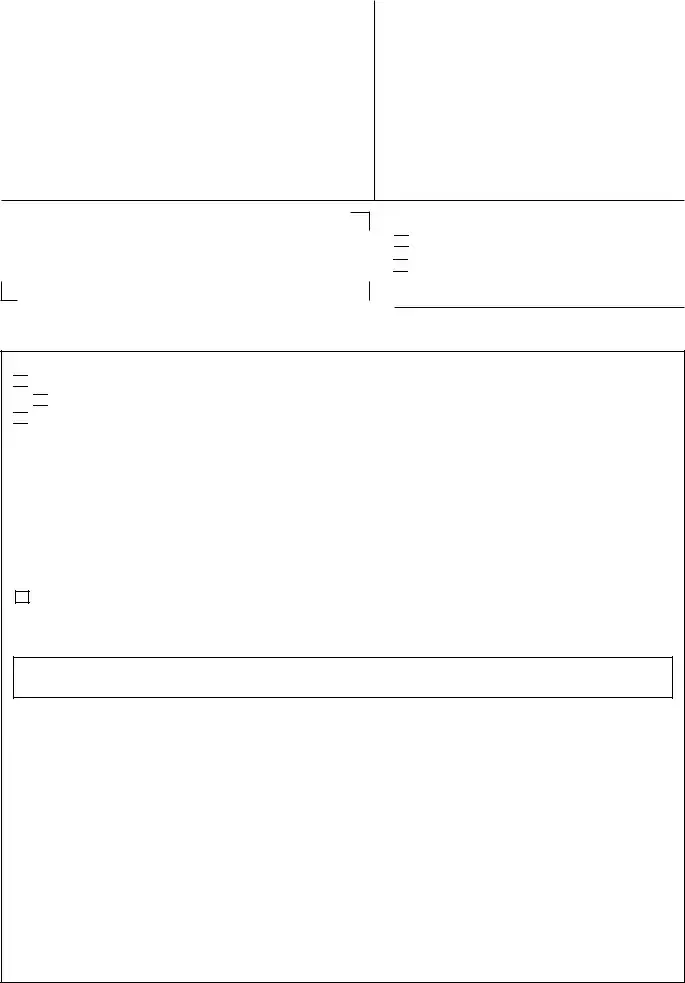What is a Personal Deed form?
A Personal Deed form is a legal document used to transfer ownership of real estate from a deceased individual’s estate to its designated beneficiaries. This transfer occurs under the authority granted to a personal representative, who acts on behalf of the estate. The form is crucial in formalizing the conveyance of property rights after a person's death.
Who can use a Personal Deed form?
Typically, the form can be used by the personal representative of an estate. This person is appointed to manage the deceased's affairs, which include distributing property according to the deceased's will or state law if there is no will. The personal representative might also be referred to as an executor if there was a will.
What information is required on the form?
The Personal Deed form requires several key pieces of information. This includes the name of the deceased, details of the property, and the authority under which the personal representative is acting. Other required elements include signatures from the personal representative and a notary public, which verifies the identity of those involved in the transaction.
Do I need a notary public for the Personal Deed form?
Yes, having a notary public is essential. The notary's role is to verify the identities of the individuals signing the document. This adds an extra layer of security to the transaction, ensuring that the signatures are valid and that the document can be trusted.
What is documentary transfer tax, and do I need to pay it?
The documentary transfer tax is a tax imposed on transactions involving the transfer of real property. Depending on the circumstances of the property transfer, this tax may be calculated based on the full value of the property or less any existing liens and encumbrances. It is important to review your situation to determine if you need to pay this tax and how much it will be.
Is it necessary to provide property details on the Personal Deed form?
Yes, it is necessary to provide specific property details. This typically includes the property's location and assessor’s parcel number. If more space is required, an attachment can be added to include additional property information.
What happens if the property has multiple owners?
If the property has multiple owners or beneficiaries, the Personal Deed form needs to reflect this accurately. All interested parties may need to sign the document to ensure that their rights are adequately represented and acknowledged in the transfer process.
Can I use the Personal Deed form if there was no will?
Yes, you can still use the Personal Deed form even if there was no will. In such cases, the transfer would follow state laws regarding intestate succession, which determine how the deceased’s assets should be distributed among heirs. The personal representative will ensure that the form complies with these requirements.
Where do I file the Personal Deed form once completed?
Once completed, the Personal Deed form must be filed with the county recorder's office in the county where the property is located. This filing ensures that the transfer of ownership is officially recorded and becomes part of the public record, which helps protect the rights of the new owner.



 Computed on full value of property conveyed, or
Computed on full value of property conveyed, or
 Computed on full value less liens and encumbrances remaining thereon at time of sale.
Computed on full value less liens and encumbrances remaining thereon at time of sale.
 and pursuant to the Order of the ______________________________ County Superior Court, dated _____________________
and pursuant to the Order of the ______________________________ County Superior Court, dated _____________________
 confirming sale of real property, which directs this conveyance, and for value received,
confirming sale of real property, which directs this conveyance, and for value received, 
 and pursuant to full authority under the Independent Administration of Estates Act,
and pursuant to full authority under the Independent Administration of Estates Act,